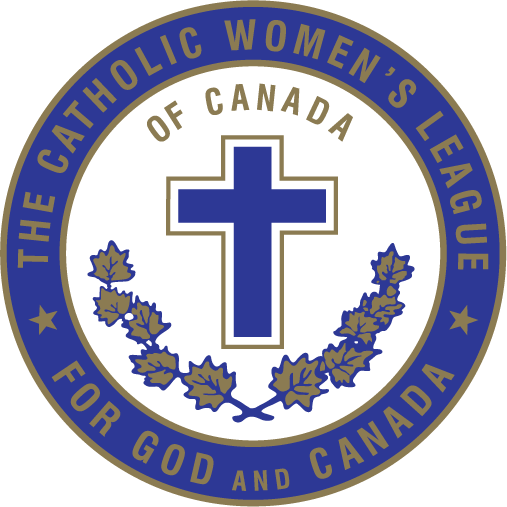Margaret Schwab
Saskatchewan Provincial Council President
2017 Annual Report
In 2017, fewer parish councils took advantage of online reporting than in 2016. This was common across all three dioceses in Saskatchewan. There were a few who did not receive information about how to access the online process and a few who sent in a hard copy. This process seemed to be difficult for councils. Some parish councils did not have anyone who could enter reports via the Internet, others were uncertain as to how to go about this. It was felt more training on this subject was necessary, perhaps a sample training module that could be loaded onto a computer and taken to workshops, where participants would practice logging in, completing brief mock-ups of the survey and saving files. It was felt a similar mock-up could be used for online memberships as this too seemed intimidating for parish councils.
Inform the Membership
Most parish councils used The Canadian League, national communiques, parish bulletins and diocesan newsletters to inform members. Websites, both national and provincial, were increasingly in use, but still less preferred than paper sources. Other sources listed were the Canadian Conference of Catholic Bishops and Catholic Organization for Life and Family websites, and faith-based and secular newspapers. Some used technology, either through sending text messages to members or sending group e-mails from a League e-mail account.
Palliative care and physician assisted dying topped the list of priorities in all dioceses with many parish councils spending time discussing or acting upon these topics. There was also a high interest in limiting access to pornography, youth mental health and the refugee crisis. The diocesan annual reports reflected that parish councils took an interest in all national priorities to some degree. Most councils set aside some time during a meeting to discuss and inform members about these issues, using their standing committee chairpersons to lead the discussions. Use of speakers was much lower; however, it must be noted many councils did not have access to speakers in their community.
Foster Open Communications
While almost all parish councils felt their spiritual advisor was supportive, and many were able to meet with the spiritual advisor regularly, it seems few spiritual advisors were available to attend meetings or conventions.
Preside at Meetings
The Constitution & Bylaws and National Manual of Policy and Procedure were the most commonly used resources. Approximately one-half of parish councils had their own policy and procedure document. Other resources used, to a lesser degree, were the Executive Handbook, Robert’s Rules of Order and Parliamentary Procedure.
Signing Authority
Most parish council presidents had signing authority, which included banking documents, cheques, petitions and lottery licenses. This authority also applied to letters directed within and outside of the League, for example to government.
Provide Active Leadership
There was strong representation by parish council presidents at church functions as well as at diocesan conventions. Many were present at special masses, events such as World Day of Prayer, and other conferences. Regional meetings and the annual provincial convention showed a drastic drop in representation. The annual national convention received a very low representation.
Most councils paid all or one-half of the cost of attending a diocesan convention. Subsidized attendance at provincial and national conventions was minimal, with most councils reporting no subsidy at all. One diocesan report indicated a moderate number of councils subsidized workshops and conferences, while in others, there was no subsidization.
Initiate Policy
Parish councils initiated new or updated policy in funeral protocol, expense policy, year-end reporting, bursary application, donation protocol, protocols for fundraising and criminal checks/reporting process.
Executive Handbook
Most parish council executive members read the Executive Handbook and felt it was a valuable resource. A few felt too busy for extra reading; that it was not necessary; that it was not a help.
Annual Summary
One-half of parish council presidents gave an oral annual report to members. Other methods used, in lower numbers, were reporting by e-mail, parish bulletins and newsletters. There was a small number that did not provide an annual report to members.
Advisory Capacity
Most parish councils had committees for teas, donations, fundraising, social events, scholarships or bursaries, and visitations. A few reported not having other committees.
Official Spokesperson
Parish council presidents spoke most often on social events, membership, palliative care, local charities, euthanasia and scholarships/awards. Other topics addressed to a lesser extent included pro-life issues, mental health, pornography, Indigenous issues and refugees. Only one-half of councils used League letterhead when corresponding outside the League; however, a large majority ensured they reference only the membership number for the council they represented.
Summary and Final Thoughts
Most parish council presidents received assistance from former and immediate past presidents, and current executive members, including secretaries and treasurers. A few had personal mentors or a connection to a life member. Very few reported assistance from diocesan or provincial levels.
Greatest Challenge
There were many challenges listed; however, most involved keeping members interested, recruiting, not having a full slate of officers and finding time to do the tasks. Others that received mention were the amount of paperwork required and feeling inexperienced. Some met with resistance to new ideas, negativity/criticism from members, difficulty in pleasing everyone and challenges with technology. Almost all reported it beneficial to have a national theme and/or logo through which to focus activities.
Additional Comments
Parish council presidents listed many activities councils either led or took part in including World Day of Prayer, way of the cross, memorial masses for the deceased, Our Lady of Good Counsel Feast Day celebrations, publishing newsletters, gathering clothing and food for the poor, financial support to parishes and beyond, special projects for underprivileged children, brunches, teas and a large variety of social functions. Parish councils were as active as the number and age of the membership allowed. Wonderful work was going on everywhere.
Unfortunately, many parish councils struggled to find members to fill executive positions, causing the president to be overburdened. It was difficult to get younger women to attend meetings regularly; however, some found these younger women would help with short-term projects. Many councils were just coping trying to get done what needed to be done in the parish. Some were simply overwhelmed by changes to technology, finding online reporting difficult to find and complete.
As I read through reports from diocesan presidents, I was still amazed at all that was accomplished with few members. As a provincial executive, more efforts are needed to better assist councils and better train members for changes bound to happen as the world becomes more and more technological. The provincial executive also needs to encourage more members to give and receive the valued experiences that can come from mentorship.
As the national level underwent the process of planning strategically, it was hoped the future of the League will appeal to new members and rejuvenate existing ones. From the submitted annual reports, I see the Holy Spirit is indeed inspiring members of Saskatchewan as they respond to God’s call in so many ways.


